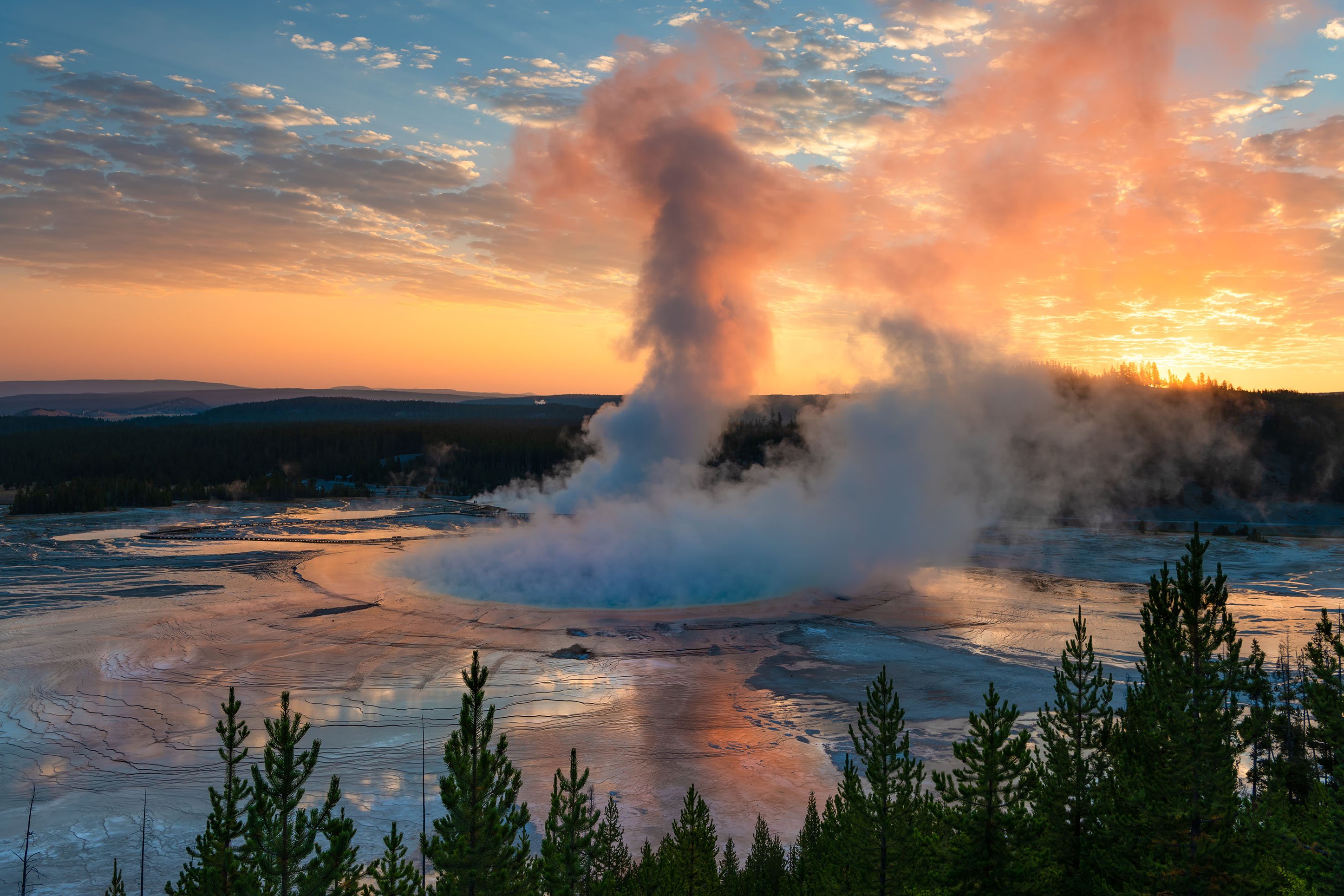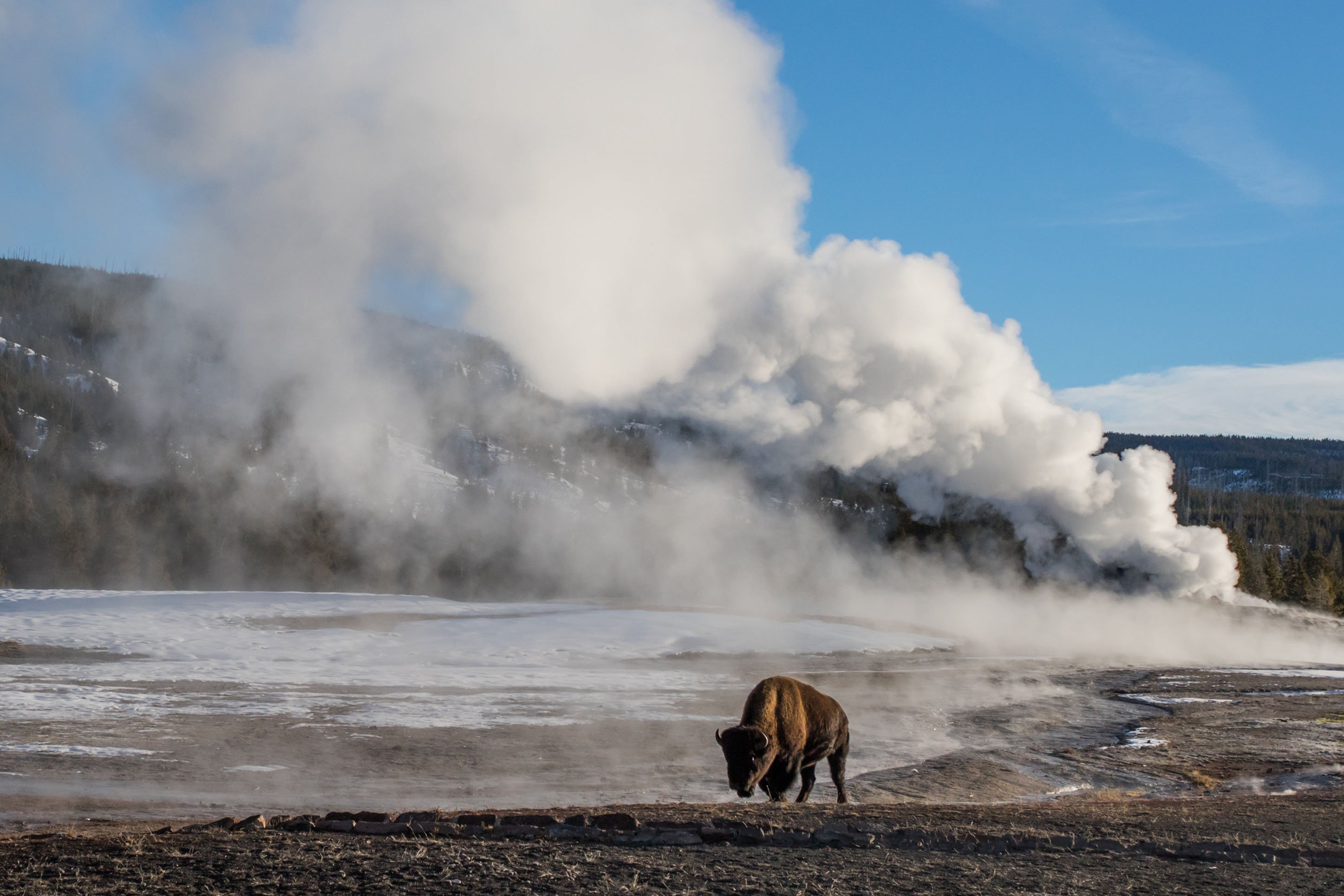A Guide to Geysers in Yellowstone National Park
Yellowstone National Park is home to almost half of the world's active geysers. Over 500 hundred geysers dot the Park, which was established mainly to protect the hydrothermal areas. Geysers, the gushing sprays of water, are hot springs with a construction that allows pressure to build to the point where an eruption occurs to release the built-up pressure. Geysers are either cone-shaped, with a narrow jet of water, or fountain-shaped, which shoots water in various directions from a pool.
In 1990, researchers lowered a camera into Old Faithful's vent. They found, at 22 feet underground, the geyser's "plumbing system" shrinks to a few inches wide. At 24 feet, a small waterfall of cool groundwater flows into the conduit. At 25-45 feet, they found a large cavern about the size of a small car, and at the bottom of the cavern, there was a "liquid tornado" of wildly boiling, churning water.
While geysers can be found in numerous places throughout Yellowstone, they are mainly condensed into Norris Geyser Basin, Lower Geyser Basin, Midway Geyser Basin, and Upper Geyser Basin.
Norris Geyser Basin
Yellowstone's oldest and hottest thermal area, Norris Geyser Basin, has two walkable zones, Porcelain Basin and Back Basin.
Ledge Geyser, Blue Geyser, and Whirligig Geyser are in the Porcelain Basin. Porcelain Basin is named for the siliceous sinter (geyserite), a whiteish-colored mineral brought to the surface by hot water. These mineral deposits create an environment that has made this the fastest-changing section of the Park. This part of the Park is not forested, so wear sunscreen and a hat.
The Back Basin is more forested, and the features are scattered. Look for Echinus Geyser, Porkchop Geyser, Minute Geyser, and the world's tallest geyser, Steamboat Geyser.

Lower Geyser Basin
This is the largest section of geysers, measuring 18 square miles, with the Firehole River flowing through the basin's center. It is also the hottest area of the Park. In 1930, they measured the hot water discharge at 15,300 gallons per minute.
The geysers here are clumped in widely spaced groups; the easiest and most interesting to access is the Fountain Paint Pot area. Here, you'll find the Great Fountain Geyser, the only predicted geyser you can drive to. It's smaller than other geysers, but it's great to view from your car in inclement weather. Also located in this area are Clepsydra, Fountain, Jet, Morning, Sizzler, and Spasm Geysers.
Midway Geyser Basin
Although this is the smallest section, it is also spectacular. Check out Excelsior Geyser, a 200x300-foot geyser discharging more than 4,000 gallons of water per minute.
You'll also find lots of color in this area. Tiny microscopic organisms called thermophiles live in the hydrothermal features. Colorless and yellow thermophiles grow in the hottest water, while orange, brown, and green thermophiles live in the cooler waters.

Upper Geyser Basin
Upper Geyser Basin holds the largest concentration of geysers in the Park, including many of the world's largest geysers – 150 geysers within a two-mile radius. Rangers can predict Castle, Daisy, Grand, Old Faithful and Riverside. While Old Faithful is the most reliable, Grand Geyser is the most impressive. It takes some time to get around this basin, so plan accordingly. You'll also want to allow time to explore the Old Faithful Visitor Education Center, which exhibits Yellowstone's hydrothermal features (geysers, hot springs, mud pots, and fumaroles). Kids of all ages enjoy the Young Scientist exhibit room, which includes a geyser model and other hands-on exhibits.
For more information on Yellowstone's hydrothermal features, go to www.nps.gov.
In our never-ending quest to keep up with all things new in Bozeman, we have been producing content for years and can't possibly update every blog when new businesses open or existing businesses close. Please reference the publish date and do your own due diligence when making plans.
